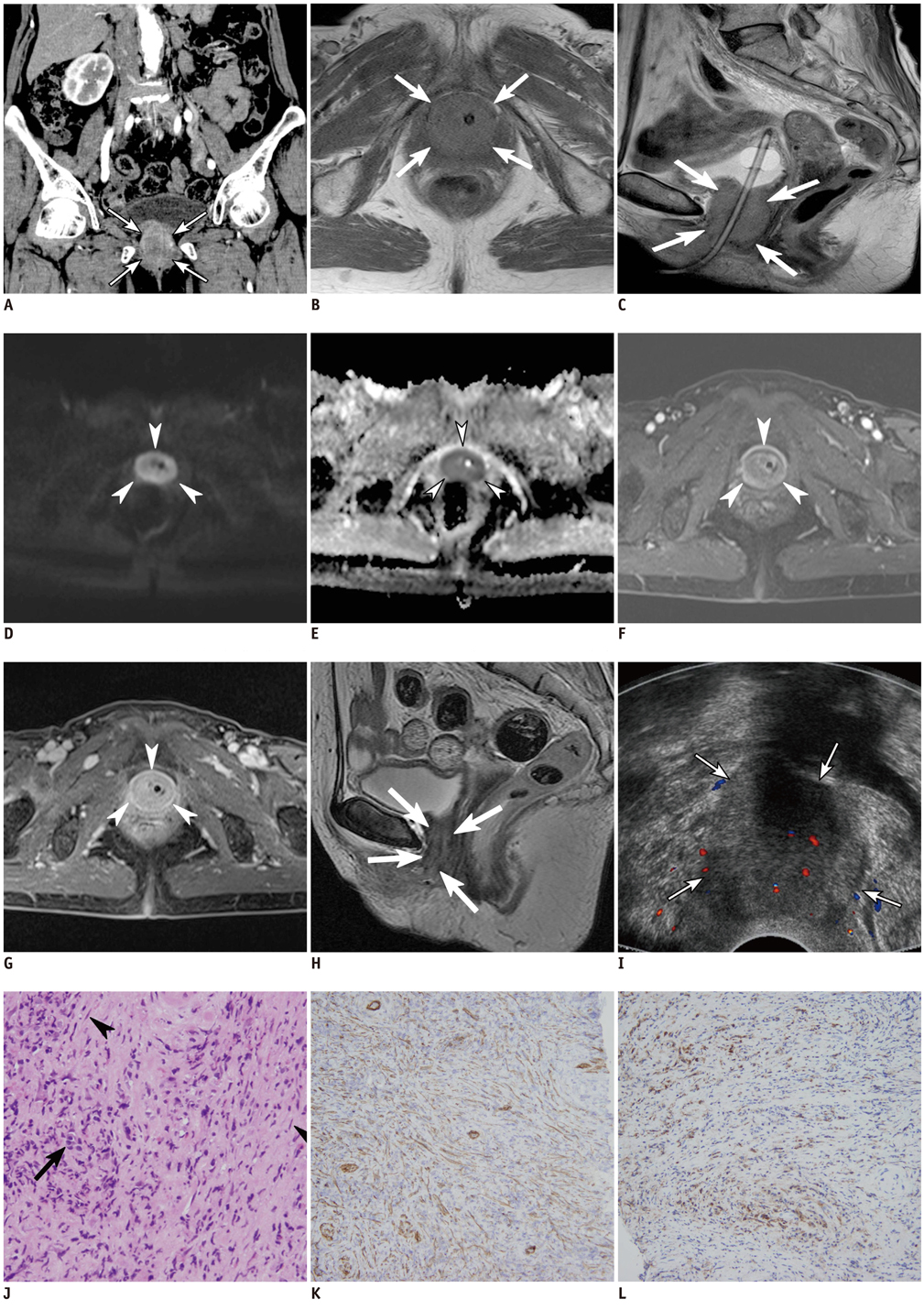Korean J Radiol.
2012 Dec;13(6):803-807. 10.3348/kjr.2012.13.6.803.
Immunoglobulin G4-Related Sclerosing Disease Involving the Urethra: Case Report
- Affiliations
-
- 1Department of Radiology, Seoul National University College of Medicine, and Institute of Radiation Medicine, Seoul National University Medical Research Center, Seoul 110-744, Korea. iwishluv@empas.com
- 2Department of Pathology, Seoul National University College of Medicine, Seoul 110-744, Korea.
- KMID: 1397512
- DOI: http://doi.org/10.3348/kjr.2012.13.6.803
Abstract
- Immunoglobulin G4 (IgG4)-related sclerosing disease is a systemic disease characterized by extensive IgG4-positive plasma cells and T-lymphocyte infiltration in various organs. We described the imaging findings of an IgG4-related inflammatory pseudotumor in the urethra. The urethral mass showed isoattenuation on unenhanced CT images, delayed enhancement on enhanced CT images, iso- to slight hyper-intensity on T1 and T2 weighted magnetic resonance images, diffusion restriction on diffusion weighted images, and heterogeneously low echogeneity on ultrasonography.
MeSH Terms
Figure
Cited by 1 articles
-
Immunoglobulin G4-Related Disease Affecting the Tonsil: Case Report and Literature Review
Hye-kyung Shim, Mi Ra Kim
Korean J Otorhinolaryngol-Head Neck Surg. 2024;67(5):300-304. doi: 10.3342/kjorl-hns.2024.00129.
Reference
-
1. Kamisawa T, Okamoto A. IgG4-related sclerosing disease. World J Gastroenterol. 2008. 14:3948–3955.2. Kamisawa T, Nakajima H, Egawa N, Funata N, Tsuruta K, Okamoto A. IgG4-related sclerosing disease incorporating sclerosing pancreatitis, cholangitis, sialadenitis and retroperitoneal fibrosis with lymphadenopathy. Pancreatology. 2006. 6:132–137.3. Leporati P, Landek-Salgado MA, Lupi I, Chiovato L, Caturegli P. IgG4-related hypophysitis: a new addition to the hypophysitis spectrum. J Clin Endocrinol Metab. 2011. 96:1971–1980.4. Higashiyama T, Nishida Y, Ugi S, Ishida M, Nishio Y, Ohji M. A case of extraocular muscle swelling due to IgG4-related sclerosing disease. Jpn J Ophthalmol. 2011. 55:315–317.5. Katsura M, Morita A, Horiuchi H, Ohtomo K, Machida T. IgG4-related inflammatory pseudotumor of the trigeminal nerve: another component of IgG4-related sclerosing disease? AJNR Am J Neuroradiol. 2011. 32:E150–E152.6. Park SB, Cho KS, Kim JK, Lee JH, Jeong AK, Kwon WJ, et al. Inflammatory pseudotumor (myoblastic tumor) of the genitourinary tract. AJR Am J Roentgenol. 2008. 191:1255–1262.7. Zen Y, Fujii T, Sato Y, Masuda S, Nakanuma Y. Pathological classification of hepatic inflammatory pseudotumor with respect to IgG4-related disease. Mod Pathol. 2007. 20:884–894.8. Yamamoto H, Yamaguchi H, Aishima S, Oda Y, Kohashi K, Oshiro Y, et al. Inflammatory myofibroblastic tumor versus IgG4-related sclerosing disease and inflammatory pseudotumor: a comparative clinicopathologic study. Am J Surg Pathol. 2009. 33:1330–1340.9. Narla LD, Newman B, Spottswood SS, Narla S, Kolli R. Inflammatory pseudotumor. Radiographics. 2003. 23:719–729.10. Harr DL, Quencer RM, Abrams GW. Computed tomography and ultrasound in the evaluation of orbital infection and pseudotumor. Radiology. 1982. 142:395–401.11. Andrich DE, Rickards D, Landon DN, Fowler CJ, Mundy AR. Structural assessment of the urethral sphincter in women with urinary retention. J Urol. 2005. 173:1246–1251.
- Full Text Links
- Actions
-
Cited
- CITED
-
- Close
- Share
- Similar articles
-
- A Case of Immunoglobulin G4-Related Sclerosing Disease Mimicking Lung Cancer
- Immunoglobulin G4-related sclerosing cholangitis
- Immunoglobulin G4-Related Systemic Sclerosing Disease: A Case Involving the Ureter and Kidney
- Two Cases of Immunoglobulin G4-Related Sclerosing Disease Mimicking Nasopharyngeal Carcinoma
- Poor positive predictive value of serum immunoglobulin G4 concentrations in the diagnosis of immunoglobulin G4-related sclerosing disease


